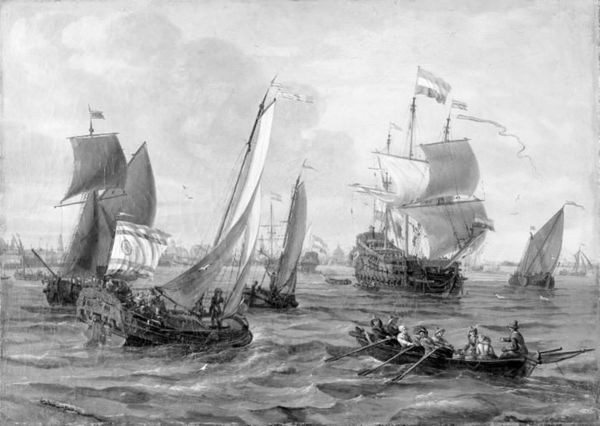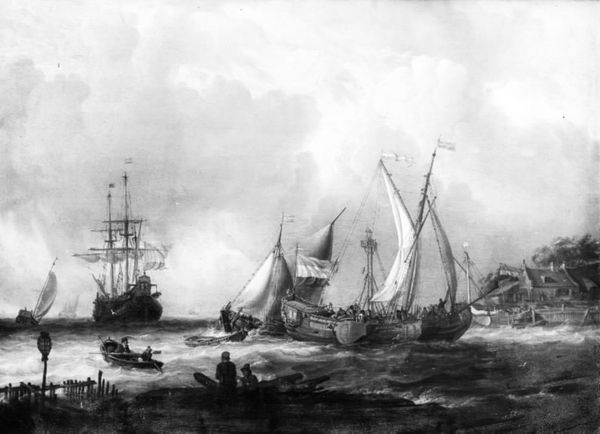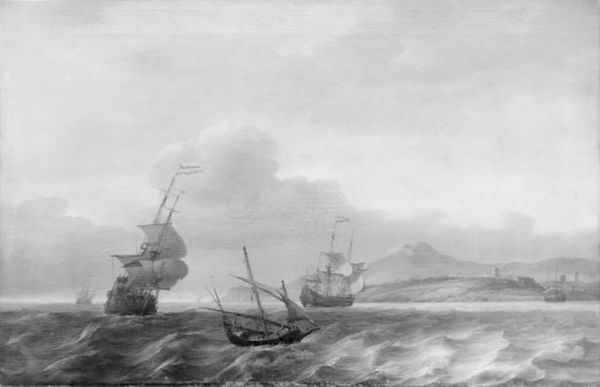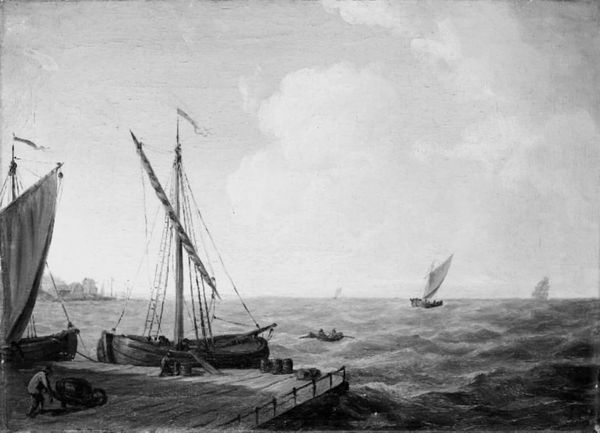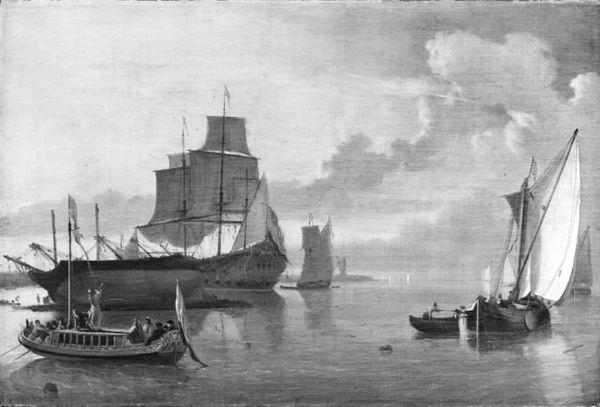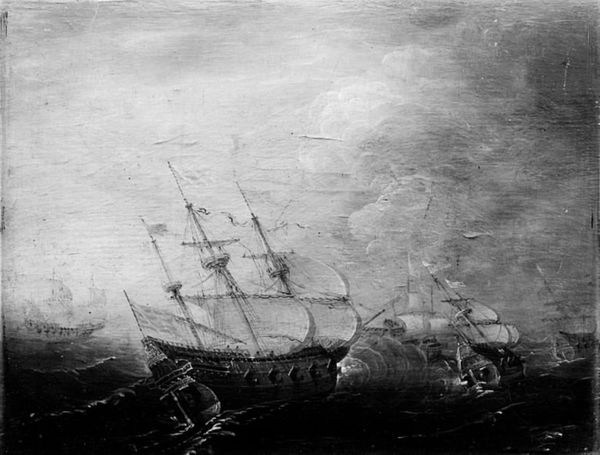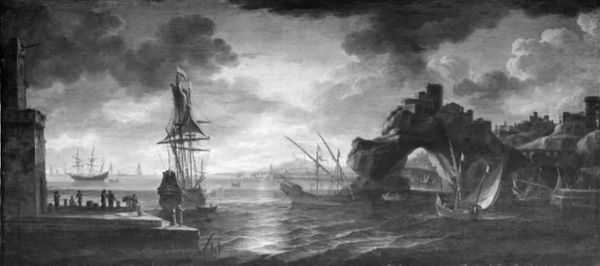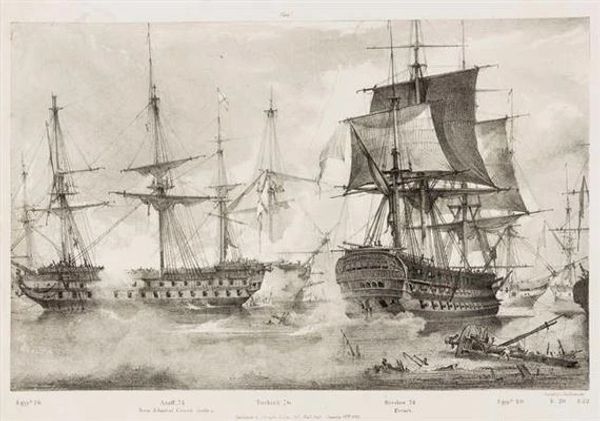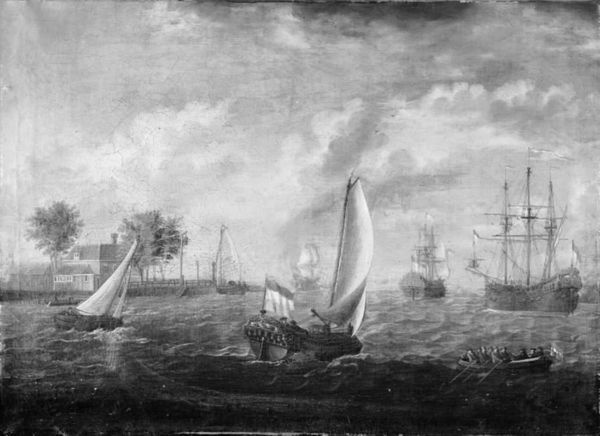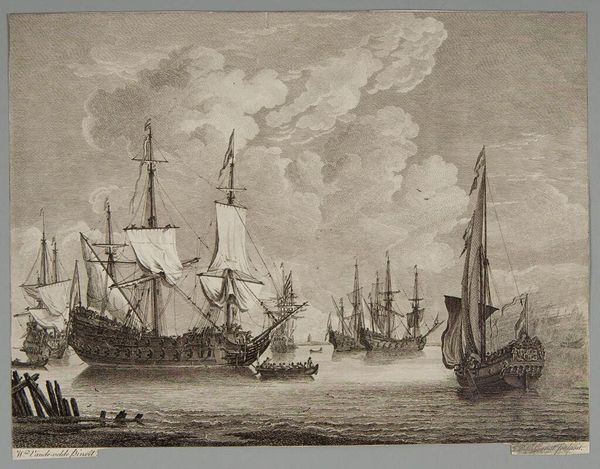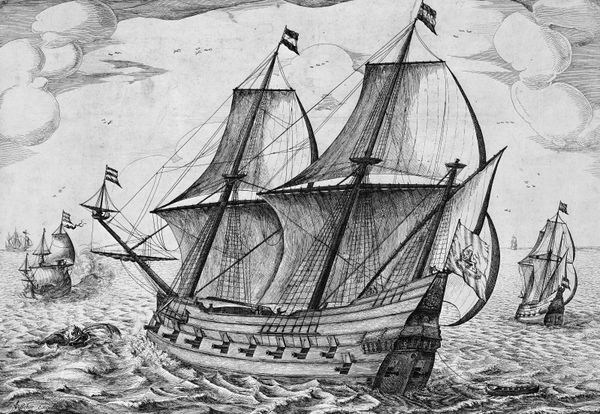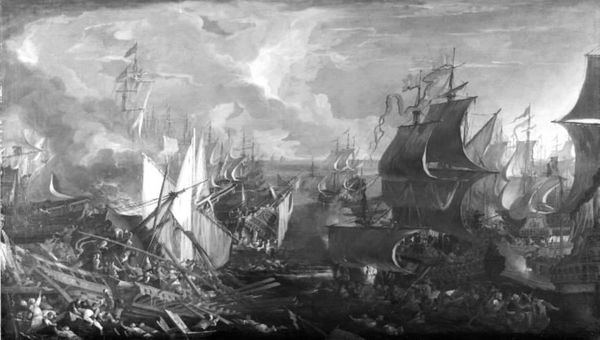
painting, charcoal
#
still-life-photography
#
dutch-golden-age
#
painting
#
landscape
#
black and white format
#
charcoal drawing
#
black and white
#
charcoal
#
charcoal
#
realism
Dimensions: 39.5 cm (height) x 50 cm (width) (Netto)
Editor: Here we have "Ships on the Sea off Amsterdam," created between 1674 and 1761, attributed to Adam Silo. It appears to be a charcoal drawing on paper, depicting numerous ships. I'm struck by the artist's use of shading to create a sense of depth, though it does feel a little flat overall. What do you make of this piece? Curator: The interplay between light and shadow is indeed noteworthy. Consider the composition – the distribution of the vessels across the plane, from the foreground to the implied horizon. How do these placements affect the visual weight and balance of the work? Do they lead your eye in a particular direction, or create a sense of stasis? Note especially the varying treatment of the sails, from crisp lines to softly blurred edges. Editor: I see what you mean. My eye is drawn to the larger ships because of their defined lines, then drifts off toward the less focused forms in the background, which flattens the depth you pointed out. Curator: Precisely. Silo's skill lies in manipulating the tonal gradations of charcoal to construct a detailed representation of maritime activity. The texture created by the charcoal also gives a tactile quality to the depiction of water and sails. The artist gives great emphasis to geometric shapes in contrast with nature’s more free-form expression in this drawing. Do you think this emphasis distracts from or elevates the work? Editor: That's an interesting question. I suppose the rigid shapes give order to a potentially chaotic scene. Looking at it now, the artist did so well creating balance here. Curator: Indeed. The rigorous formal organization prevents the image from becoming merely a descriptive record. Instead, the carefully calibrated relationship between the parts elevates it to something more profound. It reveals itself as a study of representation through the capabilities inherent in the charcoal material itself. Editor: Thank you! I appreciate your emphasis on the material and how it guides the experience of the work. It definitely changes how I see it.
Comments
No comments
Be the first to comment and join the conversation on the ultimate creative platform.
